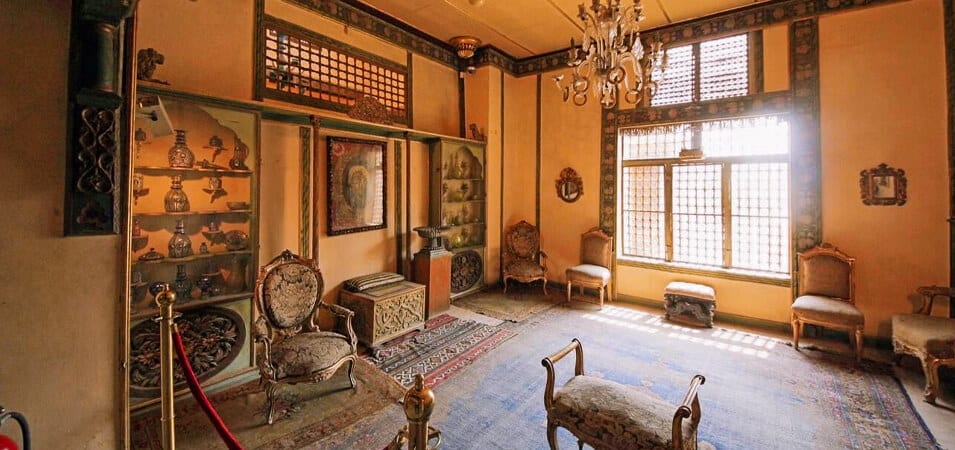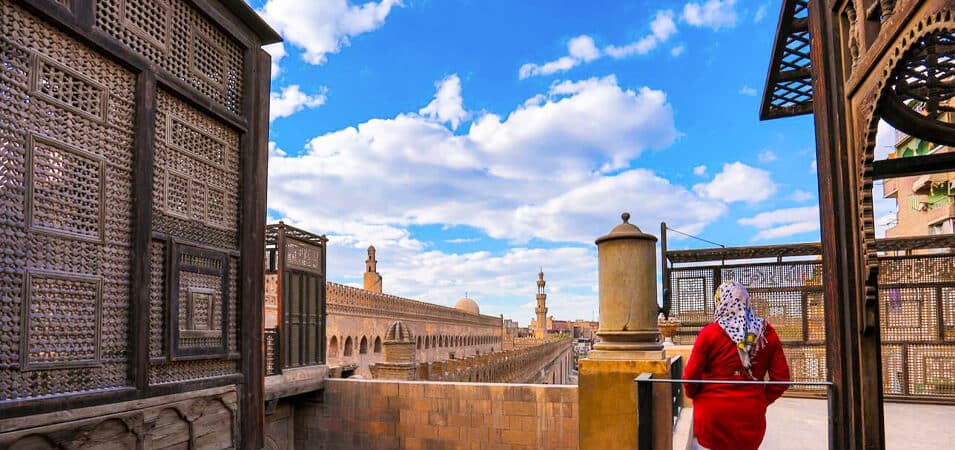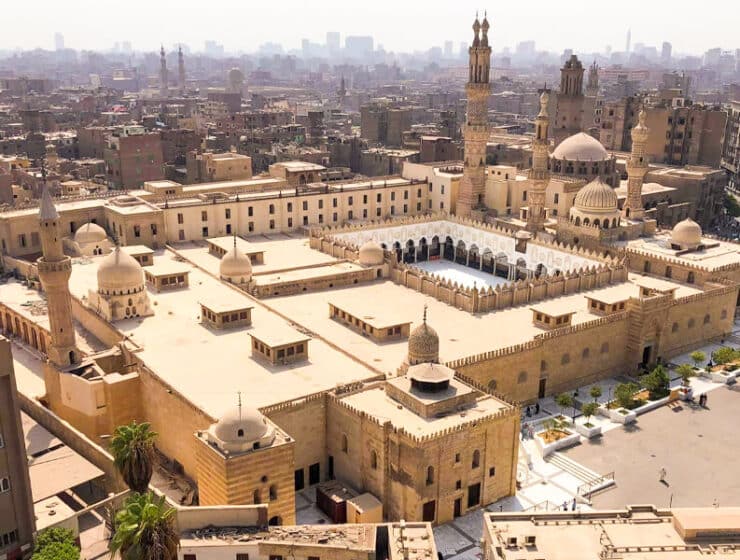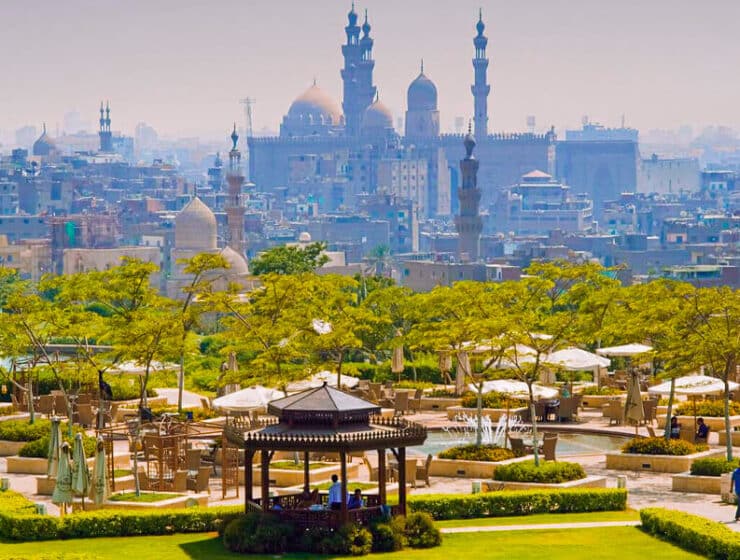The Gayer-Anderson Museum is a captivating history and culture treasure trove in the heart of Cairo, Egypt. You’re instantly transported into a bygone era as you step through its doors. This enchanting museum, also known as “Bayt al-Kritliya” or “House of the Cretan Woman,” has a rich history dating back to the 17th century. Its allure lies not only in the remarkable artifacts it houses but also in the stunning architecture and design of the building itself. With its labyrinthine corridors, lush courtyards, and intricate details, the Gayer-Anderson Museum is a testament to the timeless beauty of Islamic architecture. Join us as we explore this extraordinary institution’s captivating history, art, and enduring legacy.
Discover the charm of Islamic Cairo, a district steeped in history.
History and Significance of the Gayer-Anderson Museum
The history and significance of the Gayer-Anderson Museum are intertwined with the tapestry of Egypt’s rich cultural heritage. Originally two separate houses, the museum’s name is derived from Major R.G. Gayer-Anderson, a British officer who resided there in the early 20th century. This historical gem showcases a captivating blend of Ottoman, Mamluk, and Moroccan architectural styles, making it a living testament to Egypt’s diverse history. Beyond its architectural allure, the museum’s significance lies in its extensive collection of artifacts spanning various periods, including exquisite Islamic art, ancient Egyptian relics, and more. Its cultural importance cannot be overstated, as it offers a glimpse into Egypt’s multifaceted past and fosters a deeper appreciation for its artistic achievements. The Gayer-Anderson Museum is a repository of historical treasures and a bridge connecting contemporary visitors to the profound legacy of Egypt’s cultural evolution.
Uncover the wonders of Historical Alexandria Egypt.
Exploring the architecture and design of the Gayer-Anderson Museum

The Gayer-Anderson Museum is a true masterpiece of architectural fusion, offering visitors a captivating journey through time and design. This architectural marvel seamlessly weaves various influences, from Ottoman and Mamluk to Moroccan styles. As you wander through its labyrinthine corridors, you’ll encounter intricately carved wooden screens, mesmerizing geometric tilework, and tranquil courtyards adorned with lush gardens. The delicate interplay of light and shadow and the exquisite detailing create a sensory feast for anyone who appreciates architectural beauty. Each room tells a past story with its unique design elements and historical significance. Whether you’re an architecture enthusiast or simply an admirer of beauty, the Gayer-Anderson Museum’s architecture and design will leave an indelible impression, illustrating Egypt’s profound artistry and cultural richness.
Gaze upon the enigmatic Great Sphinx of Giza, an eternal mystery.
The collection of artifacts at the Gayer-Anderson Museum
The collection of artifacts at the Gayer-Anderson Museum is a captivating journey through the annals of history. Spanning centuries and civilizations, it showcases a remarkable diversity of treasures. The museum’s exhibits vividly portray Egypt’s multifaceted heritage, from intricate Islamic ceramics and textiles to ancient Egyptian artifacts. One can marvel at exquisite calligraphy, delicate jewelry, and intricately carved wooden pieces that reflect the artistic achievements of their respective eras. Among the notable items is the captivating Kiswa, the black silk and gold curtain that once adorned the Kaaba in Mecca. These carefully curated and preserved artifacts offer insights into Egypt’s rich past and emphasize this remarkable museum’s cultural significance and enduring legacy. Each piece invites visitors to delve into the stories of the people and cultures that have shaped Egypt’s history, making the Gayer-Anderson Museum an indispensable destination for history and art enthusiasts.
Capture the moment with our Photography Tours in Cairo.
Gayer-Anderson Museum exhibitions and events
While the Gayer-Anderson Museum is a treasure trove of history and culture, its exhibitions and events breathe life into its ancient walls. The museum hosts various shows and events throughout the year that offer fresh perspectives on its collections and the broader world of art and heritage. Something exciting always happens here, from temporary exhibitions featuring contemporary artists inspired by Egypt’s rich cultural heritage to special events celebrating traditional music and dance. These exhibitions and events provide visitors with a dynamic and enriching experience, allowing them to engage with the museum’s collection in new and thought-provoking ways. Whether you’re a first-time visitor or a regular patron, the Gayer-Anderson Museum’s exhibitions and events promise to deepen your appreciation for the rich tapestry of history and creativity that it embodies.
Explore the historic Al-Azhar Mosque, a symbol of Islamic scholarship.
Tips for visiting the Gayer-Anderson Museum

Visiting the Gayer-Anderson Museum is a unique and enriching experience, and here are some essential tips to make the most of your visit:
- Timing and Tickets: Check the museum’s opening hours and consider arriving early to avoid crowds. Purchase tickets in advance to save time.
- Guided Tours: Consider joining a guided tour to gain deeper insights into the museum’s history, architecture, and artifacts. Knowledgeable guides can enhance your experience.
- Dress Code: Respect the cultural norms by dressing modestly. Covering your shoulders and knees when visiting religious sites within the museum is advisable.
- Photography: Respect the museum’s photography policy, which may vary for exhibits. Some areas might not allow photography, while others do, so always check the signage.
- Quiet Contemplation: The museum’s serene courtyards and interiors are perfect for quiet reflection. Take your time to appreciate the architecture and ambiance.
- Comfortable Footwear: Wear comfortable shoes as you walk through various courtyards and rooms with different flooring.
- Historical Context: Familiarize yourself with the history and significance of the museum before your visit. It will enhance your understanding and appreciation of the exhibits.
- Map and Navigation: Pick up a museum map or use a digital guide to help you navigate the complex layout of the museum.
- Respect the Artifacts: Avoid touching artifacts or displays unless explicitly allowed. Preserving these treasures for future generations is of utmost importance.
- Souvenirs: Explore the museum’s gift shop for unique souvenirs and books related to its collections and history.
By following these tips, you’ll have a more enjoyable and respectful visit to the Gayer-Anderson Museum, ensuring you make the most of this cultural and historical gem.
Explore our Tours:
- Day Tour To Coptic and Islamic Cairo
- Day Tour To Egyptian Museum and Coptic and Islamic Cairo
- Islamic Cairo Tour To Famous Mosques in Cairo
- Coptic Cairo Tour Cave Church and Old Cairo Churches
- Day Tour To Egyptian Museum and Citadel and Old Cairo
- 3 Day Tour To Cairo
- 4 Day Cairo Tour Package
- 5 Day Cairo Tour Package
Preservation efforts at the Gayer-Anderson Museum
The preservation efforts at the Gayer-Anderson Museum stand as a testament to the dedication of those committed to safeguarding Egypt’s cultural heritage. The museum’s conservation initiatives encompass a multifaceted approach to preserving its architectural marvels and priceless artifacts. Highly skilled conservators employ state-of-the-art techniques to repair and maintain the intricate details of the building’s design, from its delicate woodwork to ornate tile mosaics.
Likewise, the care and conservation of the museum’s artifacts are paramount. Each piece undergoes meticulous restoration and maintenance to ensure its longevity. Additionally, climate control measures are in place to protect against environmental factors that can degrade these treasures over time.
Education plays a crucial role in preservation efforts, with outreach programs designed to raise awareness about the importance of cultural conservation. These efforts benefit the museum and contribute to the global appreciation of Egypt’s rich history.
In sum, the preservation endeavors at the Gayer-Anderson Museum exemplify the commitment to safeguarding the past for future generations, ensuring that the architectural wonders and cultural riches it houses continue to inspire and captivate visitors worldwide.
Enjoy a tranquil day at Al-Azhar Park, a green oasis in the heart of Cairo.
Famous visitors to the Gayer-Anderson Museum
Over the years, the Gayer-Anderson Museum has hosted numerous famous visitors, drawn to its unique blend of history, art, and architecture. Prominent individuals from politics, literature, and skills have been captivated by its charms. Notably, renowned authors such as Agatha Christie and Nobel laureate Naguib Mahfouz found inspiration within its walls, with the museum’s atmospheric courtyards and labyrinthine passages serving as settings for some of their literary works.
Political figures, including dignitaries and ambassadors, have also graced the museum with their presence, appreciating its historical significance and cultural treasures. These visits have enriched the museum’s legacy and highlighted its role as a global cultural destination.
The Gayer-Anderson Museum continues to attract visitors from all walks of life, each with a deeper appreciation for its timeless allure and the enduring beauty of Egypt’s cultural heritage.
The Gayer-Anderson Museum in popular culture

The Gayer-Anderson Museum has left an indelible mark on popular culture, often serving as a source of inspiration for various forms of media. Its unique blend of history, architecture, and artistry has made it a captivating setting for novels, films, and television series. For instance, Agatha Christie’s mystery novel “Death on the Nile” featured scenes within the museum, adding intrigue and mystique to the story.
Beyond literature, the museum’s distinctive architecture has caught the eye of filmmakers. It has served as a backdrop for several movies, transporting audiences into the enchanting world of Egypt’s past. Its labyrinthine corridors and atmospheric courtyards create an evocative setting that filmmakers find irresistible.
In addition to its presence in books and films, the Gayer-Anderson Museum has also been referenced in travel guides and documentaries, further cementing its status as a cultural icon. Its enduring popularity in popular culture highlights the timeless appeal of this historic gem and its role in sharing the wonders of Egypt’s heritage with the world.
Conclusion: The enduring legacy of the Gayer-Anderson Museum
In conclusion, the Gayer-Anderson Museum stands as a remarkable testament to the enduring legacy of Egypt’s rich cultural heritage. This architectural jewel’s labyrinthine passageways, intricate designs, and captivating artifacts encapsulate centuries of history and artistic achievement. From its origins in the 17th century to its continued role as a cultural beacon in the modern world, the museum has remained a source of inspiration, fascination, and education for visitors from across the globe.
The Gayer-Anderson Museum’s enduring legacy extends beyond its walls, influencing literature, film, and popular culture. It has welcomed famous visitors, both historic and contemporary, leaving an indelible mark on their hearts and minds. Its preservation efforts underscore a commitment to safeguarding the past for future generations, ensuring that its architectural marvels and cultural treasures continue to awe and inspire.
In a world of ever-changing landscapes, the Gayer-Anderson Museum remains a steadfast guardian of Egypt’s cultural identity, a place where history and art converge, and a symbol of the enduring beauty that transcends time. As we reflect on its rich history and significance, we are reminded of its profound and timeless impact on our understanding of Egypt’s cultural tapestry.





